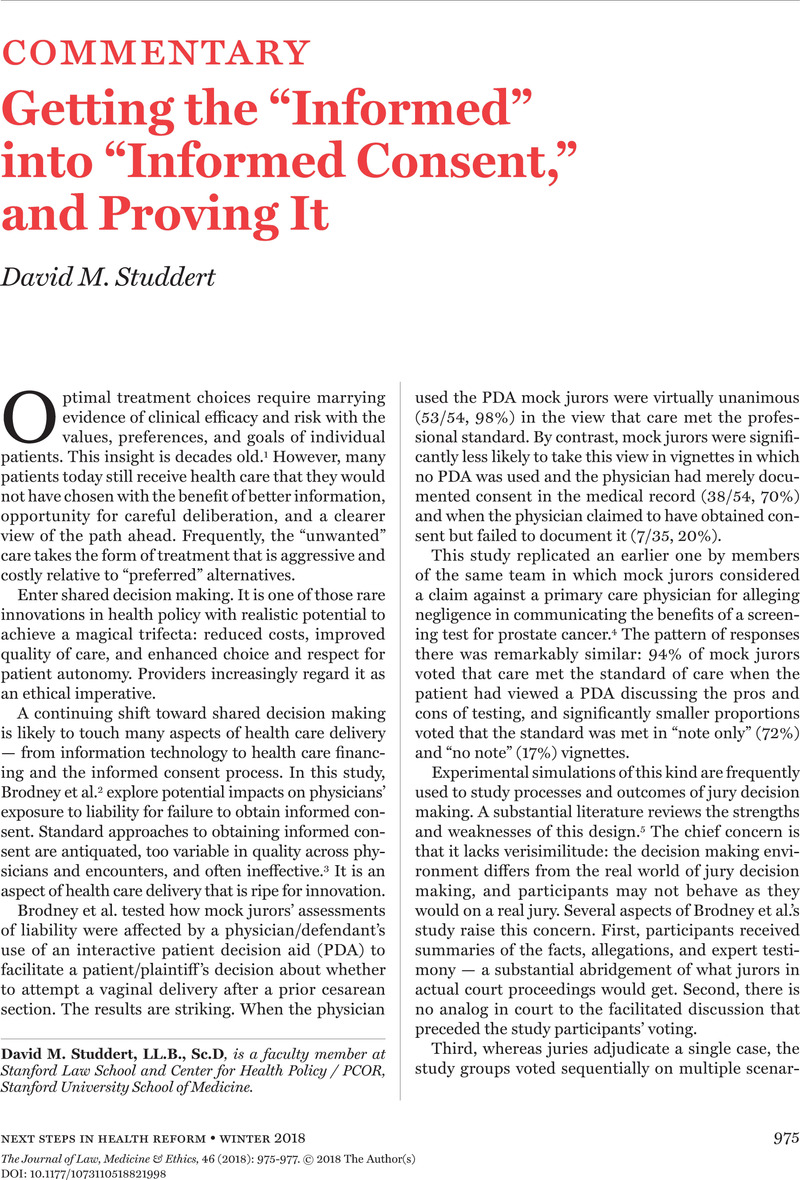Bottrell, M.M.,
Alpert, H.,
Fischbach, R.L., and
Emanuel, L.L.,
“Hospital Informed Consent for Procedure Forms: Facilitating Quality Patient-Physician Interaction,” Archives of Surgery 135, no.
1 (
2000):
26–
33;
Lavelle-Jones, C.,
Byrne, D.J.,
Rice, P., and
Cuschieri, A., “Factors Affecting Quality of Informed Consent,”
BMJ 306, no. 6882 (1993): 885-890; J.W. Berg, P.S. Appelbaum, C.W. Lidz, and L.S. Parker,
Informed Consent: Legal Theory and Clinical Practice, 2nd edition (New York: Oxford University Press, 2001).
Google Scholar 